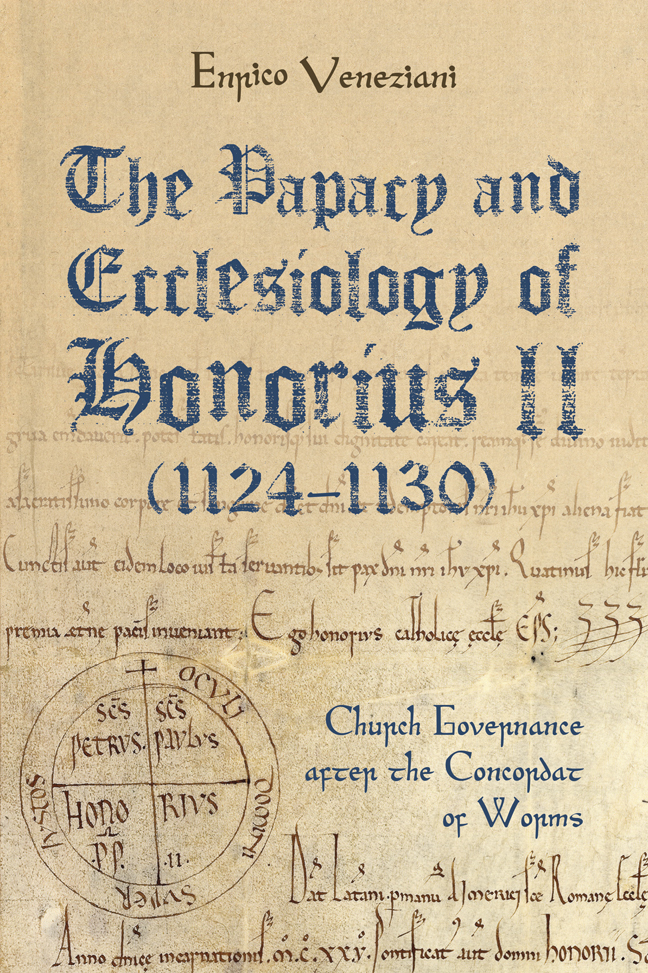 The Papacy and Ecclesiology of Honorius II (1124-1130)
The Papacy and Ecclesiology of Honorius II (1124-1130) Published online by Cambridge University Press: 09 January 2024
Honorius II's pontificate was during a period of intense change which also affected secular powers. His chancery adopted several strategies to interact with these new realities, which ranged from the emerging of the communes, through the slow strengthening of the monarchies in France and England, the creation of courts, and the growing importance of bureaucracy, to the end of the Salian dynasty with the death of Emperor Henry V in 1125, and the rise of Roger II as a result of the creation of the kingdom of Sicily by Anacletus II in 1130. This chapter focuses on these lay powers, their position in the world according to the papal chancery, and the ecclesiological elements that played a role in the pope's relations with them. It also considers whether the fact that this was the first papacy after the Concordat of Worms (1122) affected the way Honorius dealt with lay powers, and particularly with the Empire.
There is of course a significant factor in this analysis which might affect our understanding of these relations and that is the scarcity of extant letters from the papal chancery. But while chance certainly played some part in the loss of official Roman sources, this is not the only explanation for the lack of documentation. In some cases, there may have been a process of selective repression of letters by Honorius's successors as the epistles might have had an unwelcome impact on their papacies (for example, in the case of relations with the Normans). Indeed, Nicolangelo D’Acunto has recently suggested that a similar procedure affected the archives of several ecclesiastical institutions at the end of the Investiture Contest, when embarrassing documents may have been removed.
This is why I have entitled this chapter ‘Honorius's deafening silences’, which is intended as a provocation. This may seem a dangerous approach to adopt, given that the silence may not have been an intentional choice, but the disproportionate number of documents issued to ecclesiastical institutions as against the few to lay powers makes it impossible to dismiss this as a problem of surviving sources; there is something more to investigate. This approach to Honorius's papacy, besides offering a new interpretation of some of the letters, will enhance the understanding of the gap as being significant in itself when recreating the pope's ecclesiology towards lay institutions.
To save this book to your Kindle, first ensure [email protected] is added to your Approved Personal Document E-mail List under your Personal Document Settings on the Manage Your Content and Devices page of your Amazon account. Then enter the ‘name’ part of your Kindle email address below. Find out more about saving to your Kindle.
Note you can select to save to either the @free.kindle.com or @kindle.com variations. ‘@free.kindle.com’ emails are free but can only be saved to your device when it is connected to wi-fi. ‘@kindle.com’ emails can be delivered even when you are not connected to wi-fi, but note that service fees apply.
Find out more about the Kindle Personal Document Service.
To save content items to your account, please confirm that you agree to abide by our usage policies. If this is the first time you use this feature, you will be asked to authorise Cambridge Core to connect with your account. Find out more about saving content to Dropbox.
To save content items to your account, please confirm that you agree to abide by our usage policies. If this is the first time you use this feature, you will be asked to authorise Cambridge Core to connect with your account. Find out more about saving content to Google Drive.